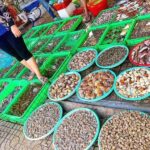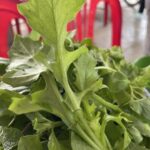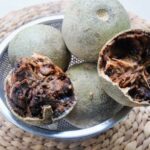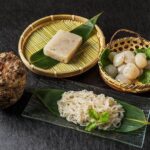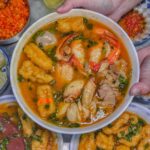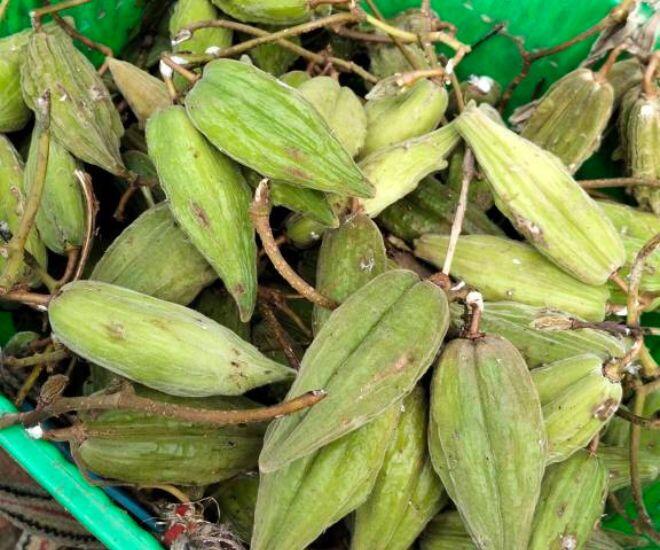
Mắc sim, a unique fruit native to the mountainous regions of Vietnam, is making its mark in the culinary world. Known for its distinct shape and taste, this wild fruit resembles a bitter gourd, but on a smaller scale, measuring only 5-7cm in length. Its rough and slightly rough texture, along with its eye-catching emerald green color when unripe, makes it a fascinating find.
For those unfamiliar with the term, “mắc sim” is the local name given to this fruit by the ethnic groups of Sơn La and other northwestern provinces of Vietnam. To them, it is more than just a fruit; it is a cultural delicacy often enjoyed during meals and social gatherings. Mắc sim can be found growing wild in the forests, and sometimes it is cultivated by the locals as a decorative fence or garden plant.
The taste of mắc sim is an acquired one. When cut open, the fruit reveals a pale green flesh and a milky white sap that gives it a strong astringent and sour taste. This unique combination of flavors can be off-putting to first-time tasters, but it is this very same “lip-puckering” quality that makes it addictive to those who acquire a taste for it.
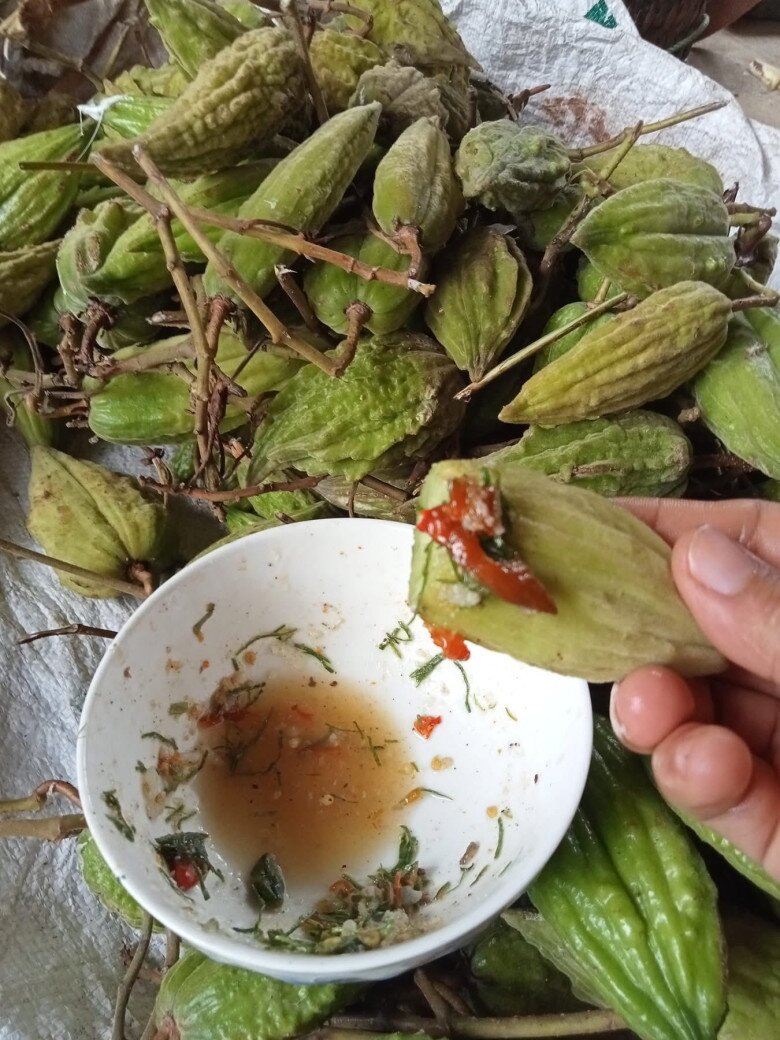
The locals have mastered the art of enhancing the flavors of mắc sim through careful pairing with other ingredients. One of the most popular ways to enjoy it is raw, thinly sliced, and wrapped with julienned jicama, unripe mango, and dipped in “chẳm chéo,” a legendary Thai dipping sauce. This combination creates a flavor explosion: the sourness of the fruit and mango, the astringency of the skin, the spiciness of chili, and the saltiness of the dip blend harmoniously with the mild sweetness and crispness of jicama. It is a mouthwatering snack, perfect for get-togethers with friends or family meals.
For a more elaborate dish, the mature fruits are peeled and mixed with a concoction of garlic, chili, salt, MSG, and finely chopped coriander. This mixture can be served as a side dish with rice or herbs, offering a unique and flavorful experience while retaining the characteristic taste of mắc sim. This preparation method is similar to that of green hawthorn berries, showcasing the creativity and diversity of highland cuisine.
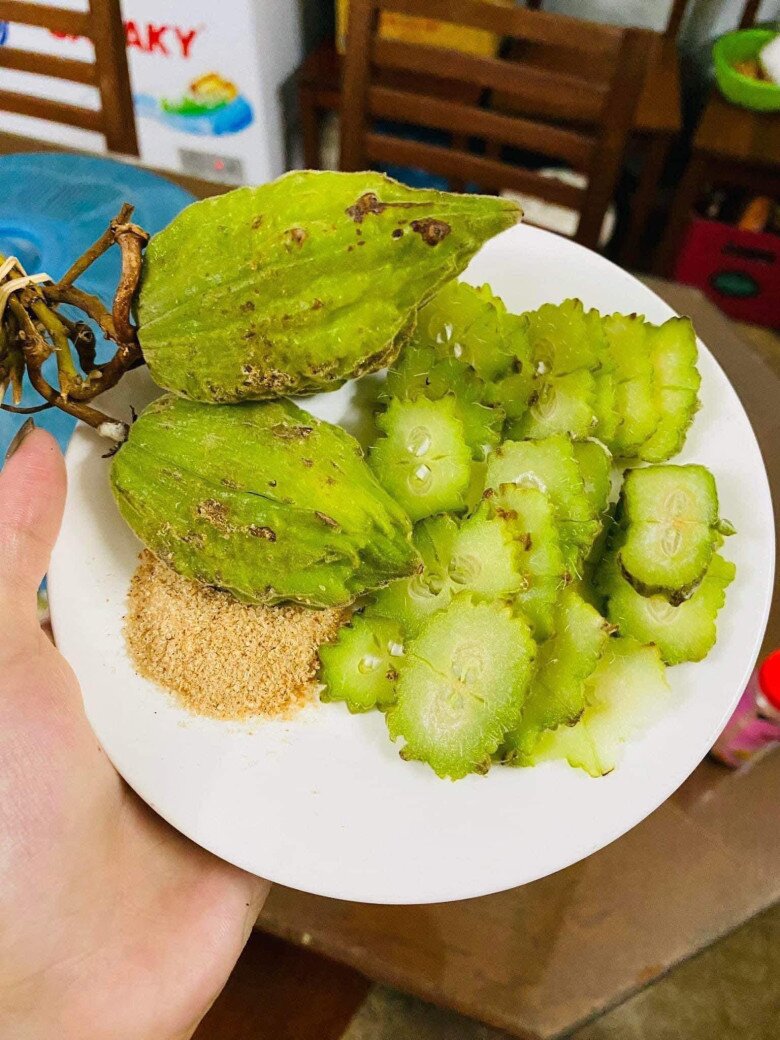
The best time to indulge in this wild delicacy is from August to October, when the sun shines brightly on the terraced fields. During this period, Thai girls venture into the forests to pluck the ripe clusters of mắc sim. Despite being a wild fruit, it is quite scarce, making the harvesting process laborious. This, coupled with limited availability, contributes to its high market price.
A cluster of five mắc sim fruits typically costs between 10,000 and 15,000 VND, which equates to nearly 100,000 VND per kilogram. While this may seem expensive for a forest fruit, it hasn’t deterred enthusiasts. With the advent of technology and social media, mắc sim has gone beyond traditional markets and street stalls; it is now widely advertised and sold online. Sellers often offer combo deals that include the fruit, jicama, young mango, and the essential dipping sauce, ensuring a complete culinary experience. This digital approach has broadened the reach of this specialty fruit, satisfying the cravings of nature-loving foodies far and wide.
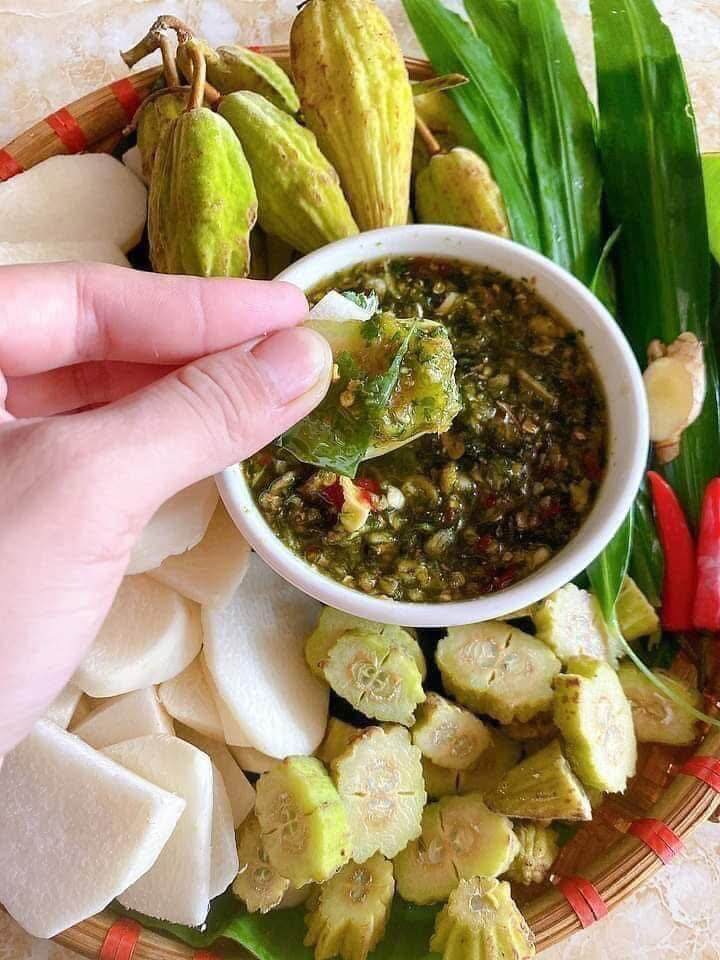
Mắc sim has evolved from a humble wild fruit to a sought-after delicacy, gaining popularity in recent years. However, large-scale cultivation is yet to catch on, resulting in limited supply and higher prices. This once-obscure forest fruit has become a prized specialty, generating significant economic value for the highland communities. The story of mắc sim is a testament to the rising popularity of local produce and the enduring appeal of nature’s simplest offerings.
The Wild Vegetable That Grows Unharvested, Now a Delicacy for Its Crisp Sweetness, Sought After by Connoisseurs.
In the wind-swept hills of Nam Tra My, Quang Nam, amidst the vast and majestic forests, lies a culinary treasure known as “rau luoi” or “rau lui.” This wild mountain vegetable has transcended its humble origins and emerged as a renowned delicacy, sought after by discerning food connoisseurs as a precious gift from nature itself.
The Underground Delicacy: A Surprise Package of Flavor and Health.
The humble tuber, devoid of any prominent aroma, has captivated the hearts (and taste buds) of many. With its unique flavor, satisfying texture, and remarkable ability to satiate hunger, the nưa root vegetable is emerging as a culinary sensation across Vietnam, from the mountainous regions of the Northwest to the provinces of the Central and Southern regions. This unassuming root vegetable is poised to become a culinary staple, seamlessly blending traditional flavors with modern culinary innovation.

























